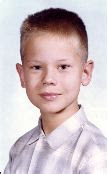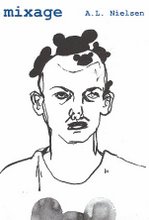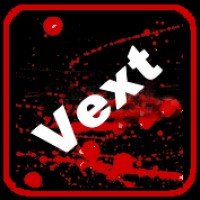RSA Journal 23/2012
[The current issue (though in the tradition of journals it is technically the 2012 issue in 2014) of Italy's major journal of American Studies includes a selection of my poetry with an introduction by Marina Morbiducci. I've copied Marina's introduction below.]
Marina Morbiducci
Introduction
Passages/Paysages
Aldon L. Nielsen and I first met at LeMans, France, on the occasion
of the international conference “Poets and Publishers: Circulating Avant-
Garde Poetry (1945-2010)” held at Université du Maine, October 14-
16, 2010. It took us very little to reckon that we were sharing U.S. poet
friends. I suppose poetry and friendship get along quite well, both constituted
by the fine fiber of an intensified way of experiencing forms of
legacy. In that particular time France was on a repeated series of dramatic
strikes, and trains were extremely chance-like. The possibility of getting
stuck at LeMans, in addition to the specific topic of the conference, made
a surreptitious look circulate among participants, Aldon talk’s being titled
“Kid Creole and His Beau-Cocoanauts: Lloyd Addison’s Astro-Black
Infinities.”
However, the interpretive line that I would like to follow in introducing
Aldon L. Nielsen’s seven unpublished poems does not unravel through
anecdotes. The path that I’m following, rather, is literally a track, as these
incipital lines from “Cecil’s Train Set – for C. S. Giscombe” (unpublished 1)
confirm: “In at last night from / Chicago / Lining red-eyed track / Smothered
clack / Of post prairie ties // Ribboned cross / Sleepless eyes / Out the
window what hard / Highways / To bypass.” In exchanging a few e-mails
about his unpublished poems, Aldon wrote: “This poem is for my poet
friend C. S. Giscombe, the only American poet I know who, in addition
to being a Professor in an English Department, holds a license to operate a
train. Giscombe has always been fascinated with travel and with trains.”1
Reading the poem one finds, he continues, “internal references … to the
radical changes that time has brought to the towns of the American midwest.
The allusion to time coming across the prairies is remembering the
fact that towns stretching westward in America each had their own time
until the coming of the trains. The train schedules required a common
time that all could keep.”2 In the poem, the two fundamental coordinates
of time and space emerging are typically apprehended through movement.
In a sort of call-and-answer pattern, they build up a relationship with each
other, and the intermingling of their internal rhythm enhances mutual
dynamism, even where there is apparent stasis: “The cows remained indifferent
/ As the clouds came home,” Nielsen says in another poem (“Nielsen
Extruder,” Mixage 52) – the slow time characterizing the cows’ indifference
is counterpointed by the fast approaching floating movement of the clouds
coming home. There is always a (time-giving) passage in a (space-embracing)
landscape behind Nielsen’s poetic scene. This coupling, in turn, constitutes
the texture of life, in his view: “I was inside / What seemed to be
a long time” (“Nielsen Extruder,” Mixage 55). The poet shows, aiming
at a sort of deconstructed form of wisdom, how the spatial physicality of
his temporal existence creates one way “to learn to live with ourselves”
(“Nielsen Extruder,” Mixage 54); and again: “One makes a life no more
than a poem / Of secrets / And therefore fills with openings any obscure
passage” (“Translation From The Rubric,” Stepping Razor 35). As he puts
it, there is a spatial-temporal connection engrained in his poetical compositions.
“I like to think of all my poetry occupying the same imaginative
time-space continuum,”3 and the nexus between the two dimensions of
time and space is often explicitly represented by language, or, alternatively,
by metalinguistic allusions: “Bridge passage / To switch / That trains us
/ To read that lost / Phrase” (“Cecil’s Train Set – for C. S. Giscombe”).
Language is vehicle, language moves, language discovers: “A man used his
language to know the world he’d discovered” (“Translation From The Rubric,”
Stepping Razor 35). Returning to “Cecil’s Train Set”: “The last lines
celebrate the fact that Giscombe carried his bicycle on a train to Canada so
that he could explore the Pacific Northwest.”4 The notion of exploration
here hinted at once again echoes Nielsen’s image of “The man [who] used
his language to discover the world anew” (“Translation From The Rubric,”
Stepping Razor 35).
In the poem “Untitled” (unpublished 2), in one of his imaginative peregrinations,
Nielsen conjoins family with friends. Dedicated to his own
father and the poet George Oppen – both wounded in the Battle for the
Bulge during World War II – “this poem is a lyric meditation on their
experiences and on our debts to that generation.”5 “My father’s lung / Concussed
/ Nebraska air / Rushed to the front / Punched out of Belgian mud
/ Was it the same / Shelling shook / Oppen / Shook me / Loose / It was not
this sky / Wounded them / ….” The broken line and the panting rhythm of
the fragmented and elliptical syntax, well reproduce the shock of war and
the physical traumas it causes, the bodily – as well as soul’s – mutilation.
This leads to almost ineffable pain, and the rags of life significantly remain
“eerily precarious” (“Untitled,” unpublished 2).
A return to safe ground back home is represented by the third unpublished
poem here presented, “from KANSAS,” where the poet deals with
some of the themes about the American mid-west, also treated in previous
writings:
This is the second of a pair of sequences written while on extended visits to the
places named, the other sequence being ’from Ghana.’ … Kansas was a major
battleground in the disputes over slavery that led up to America’s brutal Civil
War, but many of the allusions are far more contemporary. The section headed
’Frank,’ for example, celebrates the odd appearance of Kansas in the writing of
Frank Zappa for the first album by the Mothers of Invention.6
Here another leading motif of Nielsen’s compositions appears: the explicit
reference to music. In this case, rock music, even though in many
other poetical and critical works the connection is primarily with jazz and
Afro-American rhythms, as we will show in a few lines. Another artistic
thread adds to the plot: “The avant-garde film maker Stan Brakhage, mentioned
in one stanza, was from Kansas, and lived for a time in an orphanage
there.”7 The journey through that land cinematically encapsulates a
remembrance and a projection, both stretching along a multilayered synaesthetic
dimension of simultaneous experiences:
The next-to-the-last stanza recounts an eerie experience when my wife and I
were walking past a music store in Kansas and caught sight of a large painting
of Gil Scott-Heron, the poet and song writer who recorded ’The Revolution
Will Not Be Televised.’ Scott-Heron, who had been one of my teachers in college, had just died a few months before, and a painting of his face was about
the last thing we expected to encounter in Kansas that summer.8
I couldn’t agree more with Will Alexander when he says that “The
poetry of Aldon Nielsen is marked by rare insight, which penetrates the
invisible moments of our daily peregrinations” (backcover, Stepping Razor).
It is not surprising that the newly issued book of poems by Nielsen is
titled A Brand New Beggar, and that a new edition of his prose poem Evacuation
Routes of 1992 is published anew. Movement again, peregrinations,
escapes.
Languagescape
If “from KANSAS” deploys horizontally, the unpublished poem “Geotropism”
(unpublished 7) displays verticality. With its reference “to the
downward growth of plant roots” the poet envisages a parallel to the “trope”
element in composition. I mentioned earlier the texture of metalinguistic
terms and rhetorical devices engrained in Nielsen’s poetic fabric. The
following list of phrases is taken from Mixage (2005): “vanished tongues,”
“dwarf morphemes” (52), “My mother was all in similes” (57); “Supple Meant,”
“Epistemological Hesitation,” and “Mixophobia” (italics mine), for instance,
are titles of poems from the said book; Mantic Semantic, instead, is the title
of Nielsen’s 2011 collection, published by Hank’s Original Loose Gravel
Press, Lawrence, Kansas. The poem “Second Person” – included in Mantic
Semantic – hinges on metalinguistic references: “If I come to speak in your
name / … / If I come to your name with no knowledge / Of what is intended
there / If I enter that space which fills the mouths of others / When they
speak of you / That space which so seldom surrounds your own / Guarded
tongue / Will it be to say one of those sentences / That has insisted upon itself
through history / Repeating itself into language after language / Like some
stuttering fool who cannot / Make himself understood / ….” (all italics mine).
“Impenetrable Jargon,” in the same collection, rotates around anagrams,
compounds and blendings, alternating vowel presence and substitution,
morphemic deconstruction and incremental repetitions, alliterations and
assonances, cutting across diverse languages and historical eras, with lines
which, in reiterated tercet pattern, exquisitely pave their way through the
edification of a sonorous ambience: “golf / gulf / guelph // men / menace /
menses // lam / laminate / lamb // chancy / chump / chanteuse // … // infer
/ in fur / infernal // voile / viola / voila.” The poem “Geotropism” is, according
to Nielsen, “ultimately about the faith of language.”9. The Creeleyan
credo that we are saved through words finds here an intimately bouncing
resonance.
“The music is all there”
At the basis of Nielsen’s poems musicality lies, or rather, music rules
and rolls. One just needs to read his poems aloud – and give a quick look
at his series of poetry readings available in the internet, one interesting
link, for example, http://writing.upenn.edu/pennsound/x/Nielsen.php#St-
Marks – to find evidence of that.10 Musical allusions pervade his critical
works on African-American literature, too, as Black Chant (1997) and Integral
Music (2004) confirm. It is primarily in these two books that Nielsen
shows his lifelong commitment to the cause of African-American poetry,
dedicating his keen and profound reading to poets such as Russell Atkins,
Stephen Jonas, Amiri Baraka, Bob Kaufman, and Jayne Cortez. In “Capillary
Currents: Jane Cortez” (an essay which we first read in the groundbreaking
book We Who Love to Be Astonished. Experimental Women’s Writing
and Performance Poetics, edited by Laura Hinton and Cynthia Hogue), the
initial words literally recite: “The music is all there.” And the text continues:
“By the time that the ear falls prey to the groove, the music is already
multiplying, leveling monuments to expectation and erecting newer castles
in the air; a layering with open work areas dangerously unguarded.
This is not at all unusual these days, and never was. Still, each generation
hears ellipses” (Nielsen, “Capillary Currents: Jayne Cortez,” Integral Music
174-193). The essay is constellated by musical punctuations: “a harmolodic
whirl ensues” (175), “already-in-progress jazz poem” (175), “tradition
of call and response” (175), “The performance is a response to the
poem, an example of what musicians do with poetry. The poem is a prior
response to jazz, example of what a poet does with music” (175). Nielsen
envisages “intricate and vigorous Yoruba and Carabalí rhythms” (177)
which, in an intriguing “cultural syncretism” (175), infuse Latin suggestions
“into American jazz idioms” (177), conjuring up to a “reinvigorated
pulse” (178). The way Nielsen talks criticism is the way he conceives of
poetry. We could approach his own poems with a similar musical tension,
because “The music is all there.”
“Small Song” (unpublished 4), Nielsen says,
in addition to being a little lyric about mortality, is another tribute
to Brakhage and through him to other artists. Brakhage was particularly
taken with the passage in Ezra Pound’s ’Salutation the Second’ that begins
’Go, little naked and impudent songs.’ One of Brakhage’s many poet
friends was Robert Kelly, author of Songs I-XXX. Kelly writes in a note to
that book: ’Brakhage once told me that the notion of calling his adamantine
8-mm films Songs came to him from me. The name returned to me as
exact title for these experiments in the extended lyric.’ The name returned
to me, too, for this experiment in compressed lyric.11
“Smaller Still” (unpublished 5) “is, then, even more compressed” (ibidem).
“The irony is all there,” we could paraphrase in a sort of call and
response critical dialogue with Aldon’s own words.
Finally, “Seven Series” (unpublished 6), dedicated to Bob Perelman, is
“another such experiment in compression, so compressed that the seventh
in the series doesn’t exist.” With the reference to Wernicke’s area, in the
poem, once again there emerges Nielsen’s keen attunement to the wonder
of language, his t(h)rust in it.
Notes
1 Personal communication from the author, September 17, 2012.
2 Ibidem.
3 Ibidem.
4 Ibidem.
5 Ibidem
6 Ibidem.
7 Ibidem.
Introduction 169
8 Ibidem.
9 Ibidem.
10 See also http://heatstrings.blogspot.com/; http://epc.buffalo.edu/authors/nielsen/;
Evacuation Routes: http://epc.buffalo.edu/authors/nielsen/routes.html.
11 Personal communication from the author, September 17, 2012.
Works cited
Hinton, Laura, and Cynthia Hogue, eds. We Who Love to Be Astonished: Experimental Women’s
Writing and Performance Poetics. Tuscaloosa: The U of Alabama P, 2002.
Nielsen, Aldon L. A Brand New Beggar. Boulder and Normal: Steerage P, 2013.
––. Black Chant: Languages of African-American Postmodernism. Cambridge: Cambridge UP,
1997.
––. Integral Music: Languages of African-American Innovation. Tuscaloosa: The U of Alabama
P, 2004.
––. Mantic Semantic. Lawrence: Hank’s Original Loose Gravel P, 2011.
––. Mixage. La Laguna: Zasterle, 2005.
––. Stepping Razor. Washington: Edge / Upper Limit #9, Edge Books,
Wednesday, August 27, 2014
Subscribe to:
Post Comments (Atom)






















No comments:
Post a Comment